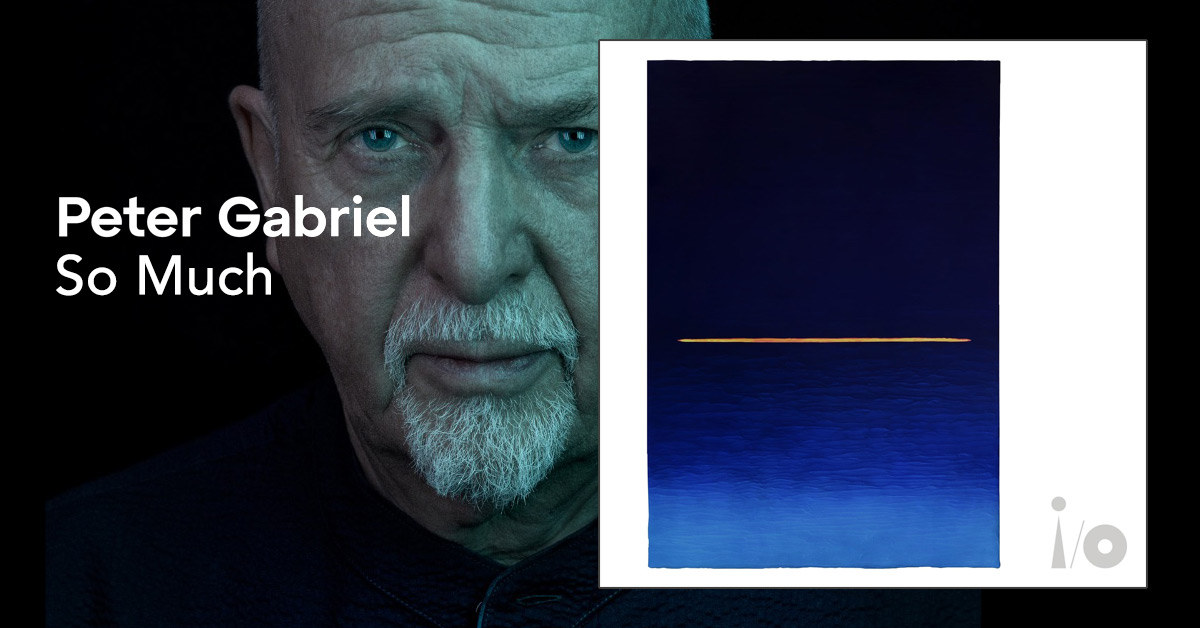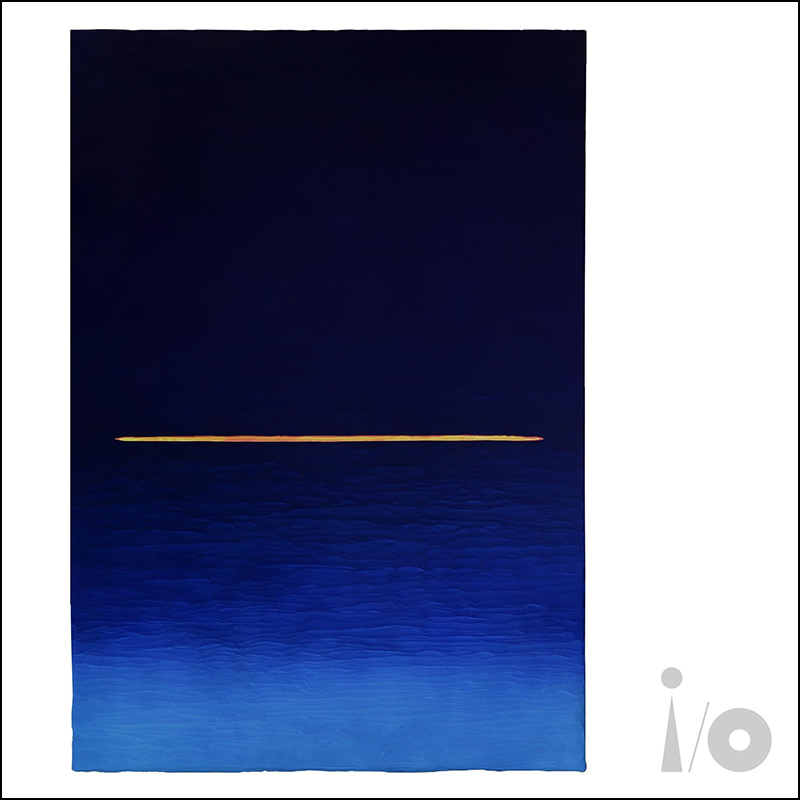


It's quite a challenge that Gabriel offers in July. By no means a dance number, but not a heartfelt cuddly song either. It is a song about the fragility of the world, about the mistakes one can make - and about the limits of possibilities. On the one hand, it is a personal song that addresses Gabriel's interest in "so much", but for which there is also only "so much" life available. On the other hand, the lyrics can also be read in terms of society as a whole.
Gabriel probably wrote them back in 2015 or 2016 - and a lot of it in one go.
Musically, the piece stands quite strangely somewhere between an English pub ballad and a church hymn.
It is lamented - or rather noted with sorrow. In actually clear words, but still with poetic images that leave room for trains of thought.
It says that much unfinished work sets the course in life. That much is begun. Rather sinister then: "As the longing drops away, the compass is reset".
The chorus succinctly says that there is "so much" to aim for, but that also only "so much" can be done.
Because: time passes as one grows up; not everything is mastered, decisions are made wrongly.
The second chorus says that there is so much left to give, but also that this edition - it is probably meant our life - is limited. ("This edition is limited" - a slogan of which there was a T-shirt on the tour - whether all the double entendres were understood?)
Towards the end, it is described that the body ages, however young we may seem inside. There are boundaries. Here there are two reminiscences of other songs from i/o: Firstly, the fact that time passes is taken up again (as in Playing For Time), and in the last verse it says "All the warmth inside of you comes from those you love", which creates a connection to Love Can Heal.
By the way, Gabriel still thinks that limits can also spur people on...
About the structure: There are three double verses, each followed by a short refrain. No transitions or interludes.
All lyrics of the album can be found on Peter Gabriel's website here.

The artist of the month for July is Henry Hudson, who was born in Bath in 1982. His painting is entitled Somewhere over Mercia. Hudson created a whole series of these "horizon lines" and started them when he was looking down at the earth from an plane. For him, there were lights and colours outside.
These are landscape paintings from a great distance and their titles always refer to a particular area of the world. "Mercia" is an ancient name for a region in central England where both Hudson and Gabriel were born.
"The relationship between the song and my horizon lines are quite poignant," Hudson says. "Dealing with places that can appear to be closer or further away."
Gabriel adds that the horizon indicates the beginning of infinity - and a limit at the same time.
More about the album artworks and the artists behind them here.
It had already been announced on Bandcamp that the July track would first appear in the Dark-Side Mix. This led to the assumption that the track behind it would also be rather worn - or dark.
As it turns out, it is - with the music being rather simple, the melodies plain. Gabriel says he wanted it to be easy to digest, but still with character.
At the beginning there is only piano accompaniment - for a short introduction and throughout the first verse. In the course and as the singing progresses, additional sounds are added very finely - almost imperceptible interspersions of the orchestra.
Gabriel sings with a very pure voice that sounds untreated and undisguised. It is close to the front, slightly brittle.
Only in the chorus does the accompaniment become clearer: horizontal orchestral lines, long drawn-out vocal tones and an organ that seems almost sacred.
This sequence is maintained throughout the song, changing only in nuances. After the first chorus, there is a return to the simple piano, but now there are also soft keyboard sounds underneath, the orchestra is set a little more clearly, and in the next chorus it is raised even further. But there is never a real increase or compression.
It is only in the last chorus that the instrumentation changes significantly: suddenly the previously dominant piano is dropped, as is everything else, leaving a wind section with a pastoral mood. For the final section, the full accompanying ensemble comes back, until the last lines return to the piano solo.
The musical effect is kept so simple that one can well imagine the song performed at night in an English pub, with melancholy and lots of alcohol - or sung on Sundays in church...
So, like a few times before on i/o, we hear the orchestra here too. This time again with more sound colours - not only the strings.
Otherwise the instrumentation is rather inconspicuous - and apart from the orchestra also small. Manu Katché is missing, because there are no drums on So Much, no special electronic additions either. Rhodes and Levin are there, though.
In addition, Melanie Gabriel sings again - but here, too, this is hardly noticeable.
Keeping with the experience of Tchad Blake highlighting and emphasising, Spike Stent's So Much version should bring things back together and connect them. The arrangement of the Dark-Side Mix, however, is so simple and reduced that there would hardly be anything that could be further joined into a unity. Does that mean that in the Bright-Side Mix, previously unknown accompanying details become audible?
In fact, a few smaller elements have been added. Above all, however, the overall weighting has changed again, so that the Bright-Side Mix seems fuller.
This becomes clear right at the beginning, because the piano is now joined by a gentle cello. In addition, there is a guitar and right from the beginning the bass. Despite all modesty, this all immediately has more volume.
Gabriel's singing is still very much to the fore. Since it is kept very dry (amazing: something like that with Spike), it seems to be even more above all the instrumental accompaniment than it already was in the Dark-Side Mix.
On the other hand the organ in the chorus has been dropped. So the character of a church song is no longer there - but neither is that of a pub song. The choir singing now has more space, which is less special as a means.
The Bright-Side Mix of So Much is more conventional - possibly also more accommodating.
The idea of leaving the brass section alone as accompaniment to the last chorus was also abandoned. Here it now only does an accentuation. What is added at this point, however, is an unfathomable hissing that further thickens the sound picture and now gives the song a fine heightening towards the end. This remains in the mix until the final phase, in which another small, new element from the choir can be heard, a vocal figure running upwards, which is surprising.
In fact, Spike Stent has again created a fuller arrangement. Perhaps also a more supple one.
The In-Side Mix was released on Apple Music one day late due to technical difficulties.
In contrast to the Bright-Side Mix, which was released at the same time, the focus in this version is clearly on piano and vocals at the beginning. Guitar and bass do not appear at all at first, and the piano sounds full and warm. A very acoustic sound, where you can hear that a lot of effort has been put into the recording of a high-quality instrument.
The vocals are mixed similarly dry as on the Bright-Side Mix. The reverb is used extremely subtly and conveys the feeling of a natural room sound rather than a reverb effect.
You only notice that this is a Dolby Atmos mix if you pay attention to the vocals, which, similar to the previous In-Side Mixes, stay in one place when you move your head with Apple AirPods, while the piano follows your movements.
As the chorus kicks in, the accompaniment is then enriched with choir and an organ sound.
In the second verse, bass and guitar finally join in. The guitar can be heard a little better in places than in the other two versions, but overall the use of both instruments remains rather discreet.
At the end of the second verse, the orchestra is used for the first time and carefully shapes the transition to the second chorus. There it becomes audible, especially towards the end, but continues to be used with restraint. In the third verse and also in the transition to the following chorus, the orchestra is again completely dispensed with.
In the last chorus all the elements already mentioned are used again, but without becoming dominant. In the outro, vocals, piano, choir, guitar, bass and organ remain audible.
If you liked the somewhat reduced approach of the Bright-Side Mix, you will also like the In-Side Mix. In both versions, deliberate care was taken to restrain the use of the orchestra and to use reverb effects sparingly on the vocals in order to support the intimate mood of this ballad.
This time, the additional version for Bandcamp subscribers is a guitar version. Gabriel had already announced it in his Deep Dive video, saying that he had wanted to try a different direction. But since So Much is very personal, it felt more right for him to return to the piano, which is more personal to him, as a foundation.
But the attempt is interesting in itself, because guitar is definitely not Gabriel's central instrument, and going in that direction doesn't happen often to him.
Apparently, this version was not created in a joint studio session, but Gabriel sent a demo to David Rhodes, who then recorded a part on his own. This works well because since David (and also Tony) "know me so well now, they know what I like... so, we have a shorthand."
Plucked electric guitar, simple bass tones - this seems simple, gentle, perhaps dreamy. As small additions, there are very quiet synth sounds - and an alienation noise that buzzes indistinctly in the background.
For the chorus there are light organ sounds (not as heavy as in the first main mix) - and in the credits there are also "sample strings" mentioned. But it's hard to tell exactly where they appear here.
For the verses, there is a return to simple guitar accompaniment. There are no further significant changes to this sequence. Not even in the last chorus at the point where the brass stand out in the Dark-Side Mix. On the whole, the Guitar Version remains very much the same.
This simplicity is captivating because it seems peaceful. There's something very encompassing about it. On the whole, however, it doesn't connect so well with the textual content of the track. Of course, this is still an unfinished version in which the accompaniment has not been completely worked out. Nevertheless, Gabriel's decision not to pursue this path was probably the right one.



Remastered, contains rare "Silver Song" with Phil Collins on Vocals.
Review available


Peter Gabriel created a mixture of the World Music in Passion with the Mainstream of So.
Review Available